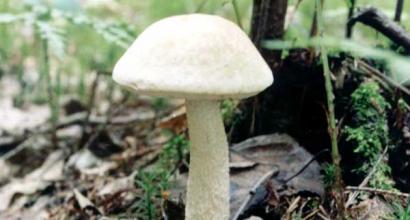How to deal with the pine sawyer: the main views and fights
It’s nice to walk through the pine forest - the tall, strings of a hundred pine trees rise uphill, the green crowns calmly rustle in the mountains, and the smell of pine needles fills the air. The pine forest provides people with ash wood and resin, with its roots it consolidates the soil and pushes the vegetation around it, and through its roots it thrives. The pine forest calms down, bringing peace and joy to the heart. Having planted a handful of pine trees in your dacha, you can create a small coniferous tree for added peace and quiet, and it is no longer acceptable if your pines are knocked down under threat. One of the main threats to our population is the coma of the poor. Pine sawmills are such pests of pine trees.
Describe and see
Pine sawyers are mosquitoes, which lie before the corral of the retina. Their habitat covers all territories where pine and similar coniferous trees grow. And one of the most unsafe pine forests. 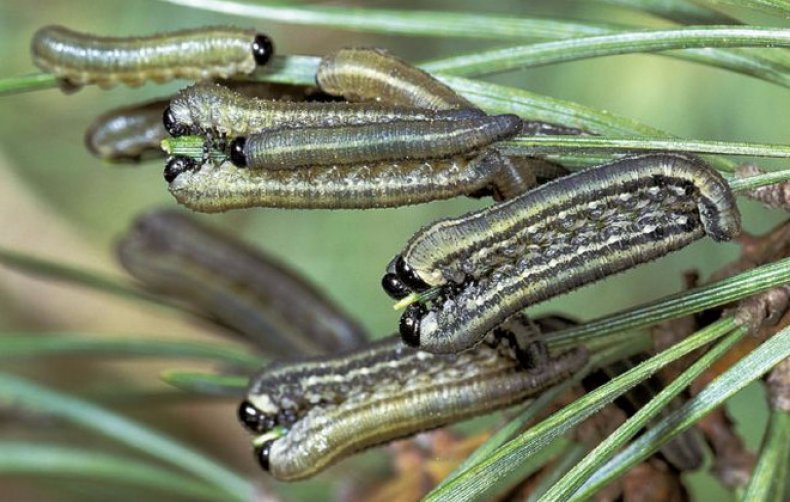
Mature males and females are similar to flies or wasps, they differ from each other in appearance, and as a rule they do not feed on fumes, but rather feed on nectar. The main disease is caused by larvae that look like caterpillars, which is why they are often called caterpillars.
Among the pine sawyers, as the predators of our forests, there are most often the common and common pine sawyer, which have many similarities.
Zvichainy
Adults: Female - rounded body, barred - from ore to light yellow, black head, black marks on the body, reaching 10 mm. The male is different from the female, the body is thinner, the surface is black, the ears are plump.
They like to settle in young pine forests, but they also live near diverse pine and mixed forests. 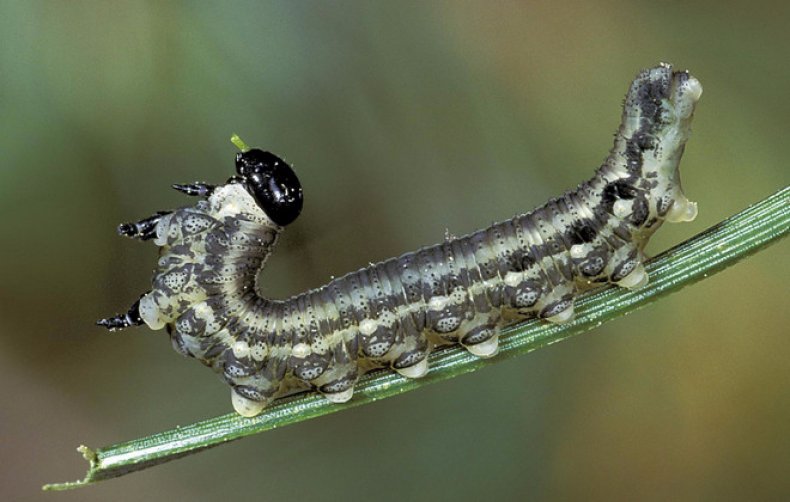 The eggs are oval, green, up to 1.5 mm, laid in pine needles, covered with greenish-brown froth.
The eggs are oval, green, up to 1.5 mm, laid in pine needles, covered with greenish-brown froth.
Larvae are the main offender. Barred - from pale yellow to green, on the body there are black spots above the skin, growing up to 2.8 cm. They touch their nests, collapse and move at the same time.
Lyalechka - a hard cylindrical cocoon of grey, brown or brownish bark, about 1 cm.
Do you know? The original pine sawfly was first described in 1758 by the founder of the species classification system, Carl Linnaeus, as Diprion pini. Rudy was described in 1785 as Neodiprion sertifer, by the French zoologist Geoffroy Saint-Hilaire.
Rudy
Adults: The female has a rounded body, barbed ore, reaches a depth of 9 mm. The male is smaller, up to 7 mm, the body is thinner, the barred surface is black, the feathers are feathery. The place of residence is similar to what it looks like before. 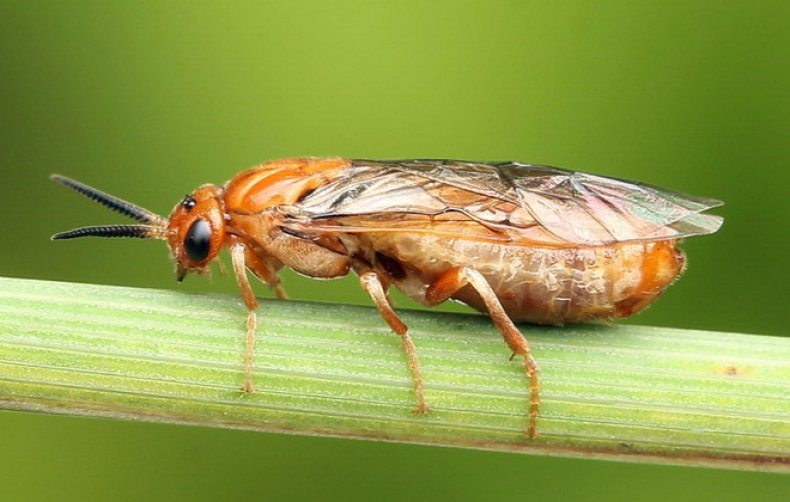 The eggs are oval, yellowish-white.
The eggs are oval, yellowish-white.
The larvae are barred gray, the head is black, the back is light dark with a lining on the sides, on the sides it is wide, black with a light lining, growing up to 2.5 cm. The behavior is similar to that of a common sawyer.
Lyalechka has a solid cylindrical cocoon with a yellow-golden finish. Stay with the forest litter until the period of villot.
Do you know? Females of the ore pine sawfly undergo parthenogenesis-can give birth to offspring themselves, without males. And it’s the male mosquitoes that are to blame here.
Features of the life cycle
The pine sawyer grows one or two generations over a long period of time, depending on the breadth of residence, the first one appears at the end of spring and early summer, the other one occurs from the middle of the rest of the summer. 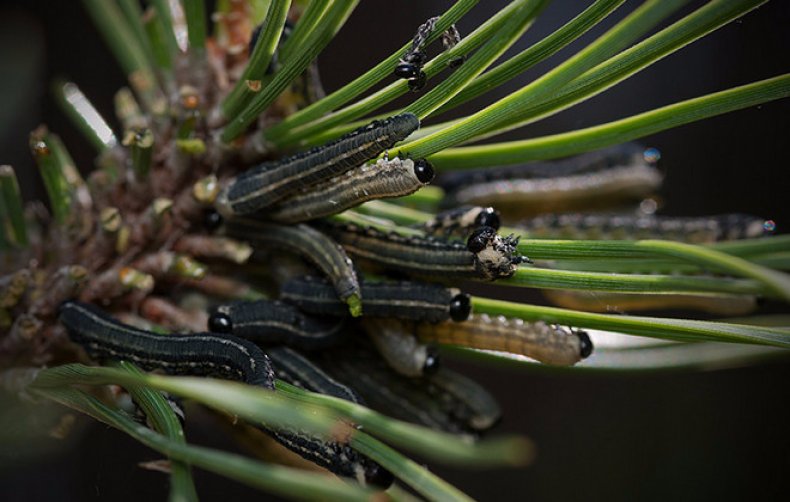 The female lays 8 to 35 eggs at a time, makes cuts on the needles, and covers them with a foamy coating for safety. , as a rule, torishnya, most often on the tops of the crowns. Then, within 20 days, the eggs develop, and larvae emerge from them in 3–4 days.
The female lays 8 to 35 eggs at a time, makes cuts on the needles, and covers them with a foamy coating for safety. , as a rule, torishnya, most often on the tops of the crowns. Then, within 20 days, the eggs develop, and larvae emerge from them in 3–4 days.
The larvae hatch in large groups and begin to grow. Constantly at the desired temperature, the period of development of larvae ranges from 25 days at +26°C to two months at +10°C. Having finished eating, the larvae form a cocoon and freeze.
The first generation establishes itself at the crown, develops for 6–12 days, the other generation moves to the forest floor, where it winters. The adults are getting out of the little doll and it’s close to noon.
In the ore pine sawyer, only one generation grows beyond the river, and the flight starts from the end of summer to the beginning of autumn. Females lay eggs on needles with a diameter of about 1.5 mm, the average one will hatch up to 100 eggs, and when sleeping, they reproduce up to 10,000 on one tree. 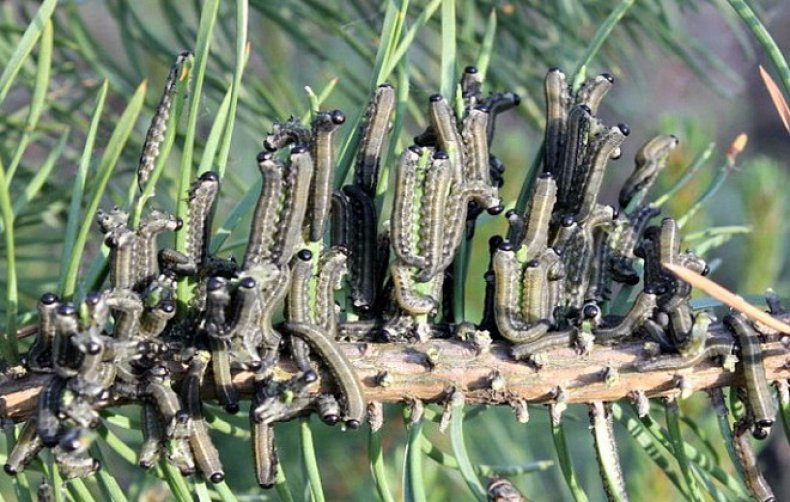 The development of the egg will end in the spring. The larvae behave in a similar way to common sawflies. The duration of the development period is to remain at a temperature ranging from 30 days at +27°C to the second month at +13°C. The larvae lie in a cocoon near the needles of the forest litter up to the sickle, then the doll.
The development of the egg will end in the spring. The larvae behave in a similar way to common sawflies. The duration of the development period is to remain at a temperature ranging from 30 days at +27°C to the second month at +13°C. The larvae lie in a cocoon near the needles of the forest litter up to the sickle, then the doll.
They overwinter just like the larval cocoon, and so do the eggs.
Skoda, what's wrong?
Pine sawfly larvae eat needles. When multiplied en masse, the needles are heavily covered with larvae, one or two per needle. Young larvae eat the needles along the edges, eliminating the central vein and the top, at which the needles dry up and curl up.
Older larvae eat needles all the time. In an hour of growth, one larva produces 30 to 40 needles, both young and old. As a result, the tops of the pine trees wither, the trees increase their growth, weaken, which leads to illness and the colonization of tree trunks.  Most often, young plants, up to 30 years old, planted on highlands, during warm, dry weather from spring to the beginning of summer, are attacked in large numbers.
Most often, young plants, up to 30 years old, planted on highlands, during warm, dry weather from spring to the beginning of summer, are attacked in large numbers.
Important! The pine sawfly does not reproduce on fine-coniferous pines, such as Siberian Pine and Weymouth, and females cannot lay eggs on their needles. Krimska pine is also less resilient to the attack of this bad guy.
Come fight
In every suitable mind there will be a Vibuchian increase in the number of bad people. Control of pine sawfly in garden plots and especially in forests is problematic; mechanical, chemical and biological methods can be used for it.
In the forest
The level of infestation of trees is determined visually by the number of larvae found in tree burs, by the exits of their life and by the number of cocoons in the forest floor.  Mechanical approaches: The removal of larvae from the throats of the fox by hand is not very successful. The only thing that can be stagnated is the creation on the stovburs of the paste rings, which will cross the descent and re-populate the larvae from the trees on.
Mechanical approaches: The removal of larvae from the throats of the fox by hand is not very successful. The only thing that can be stagnated is the creation on the stovburs of the paste rings, which will cross the descent and re-populate the larvae from the trees on.
The rings can be adhesive or driven in if the drill is wrapped with cloth in a proper manner.
Chemical treatments: When large populations of pine sawfly are detected, as well as a significant decrease in tree needles, it is rational to control them with chemicals.
Trees are covered with systemic ones, which can be eaten and internal contact actions, which can be killed either when they come into contact with a pest or through a hedgehog. It is important to apply a small amount of different insecticides at the time of treatment. 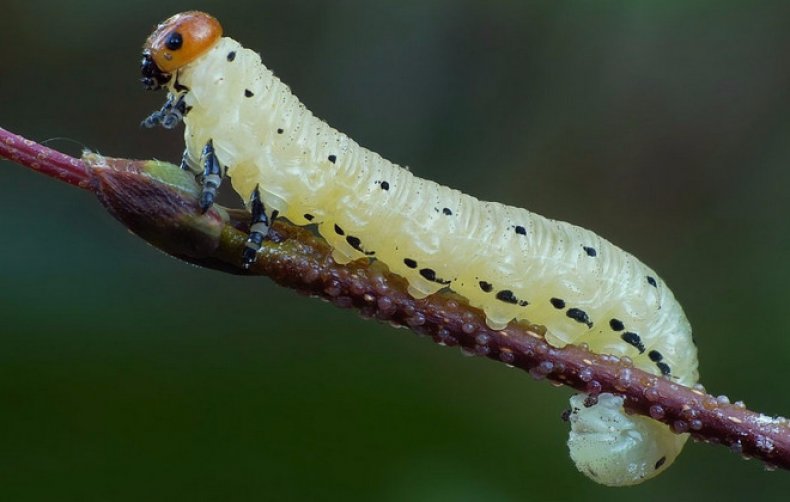
- - diyucha rechovina – thiamethoxam;
- Kreotsid Pro, Arrivo – cypermethrin;
- Vermitec – abamectin;
- , Novaktion - malathion;
- , - Pirimiphos-methyl.
The pine sawfly is well treated with the following biological preparations: Lepidoctacid.
Other biological methods are introduced sooner to preventive approaches.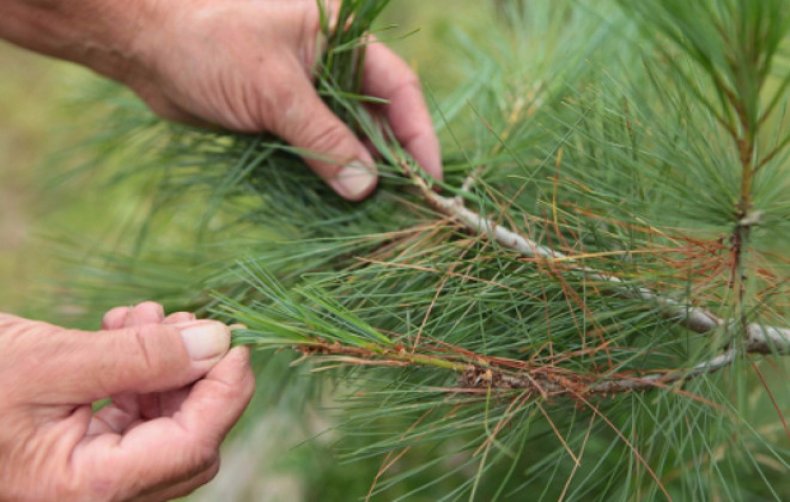
In the garden plot
If the pine sawyer has arrived at the dacha, you can continue to fight the same as in the forest, but proportionally to the extent necessary. In addition, methods are being developed to avoid getting stuck in the forest through the flow of scale.
Mechanical: The simplest way is to manually remove the larvae from the stems and trunk or beat them with a strong stream of water. The larvae must be removed from the ground and under trees.
Important! When times are unsafe, sawfly larvae produce a toxic substance that causes an allergic reaction in people. Therefore, it is necessary to collect the larvae from mittens.
Biological: At the dacha, various folk habits can be found, the most familiar from them are the concentrations of infusions, Tyutun’s infusions in the sum with badillas. 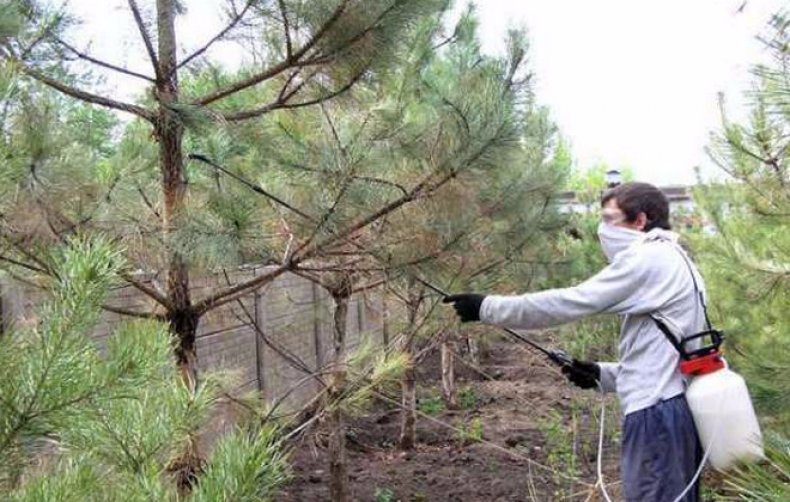 Fill 250 grams of the selected product with a liter of water and add it to the boiler at normal temperature. After straining, the ready-to-use infusion is added to a bucket of water and water from the tree.
Fill 250 grams of the selected product with a liter of water and add it to the boiler at normal temperature. After straining, the ready-to-use infusion is added to a bucket of water and water from the tree.
As a method of prevention and control of pests, it is recommended to plant tomatoes in white pine trees, their smell repels the sawfly. Using this method, you can catch natural enemies of the sawfly, such as gnat-eaters, which are located or lured by the beetroot.


